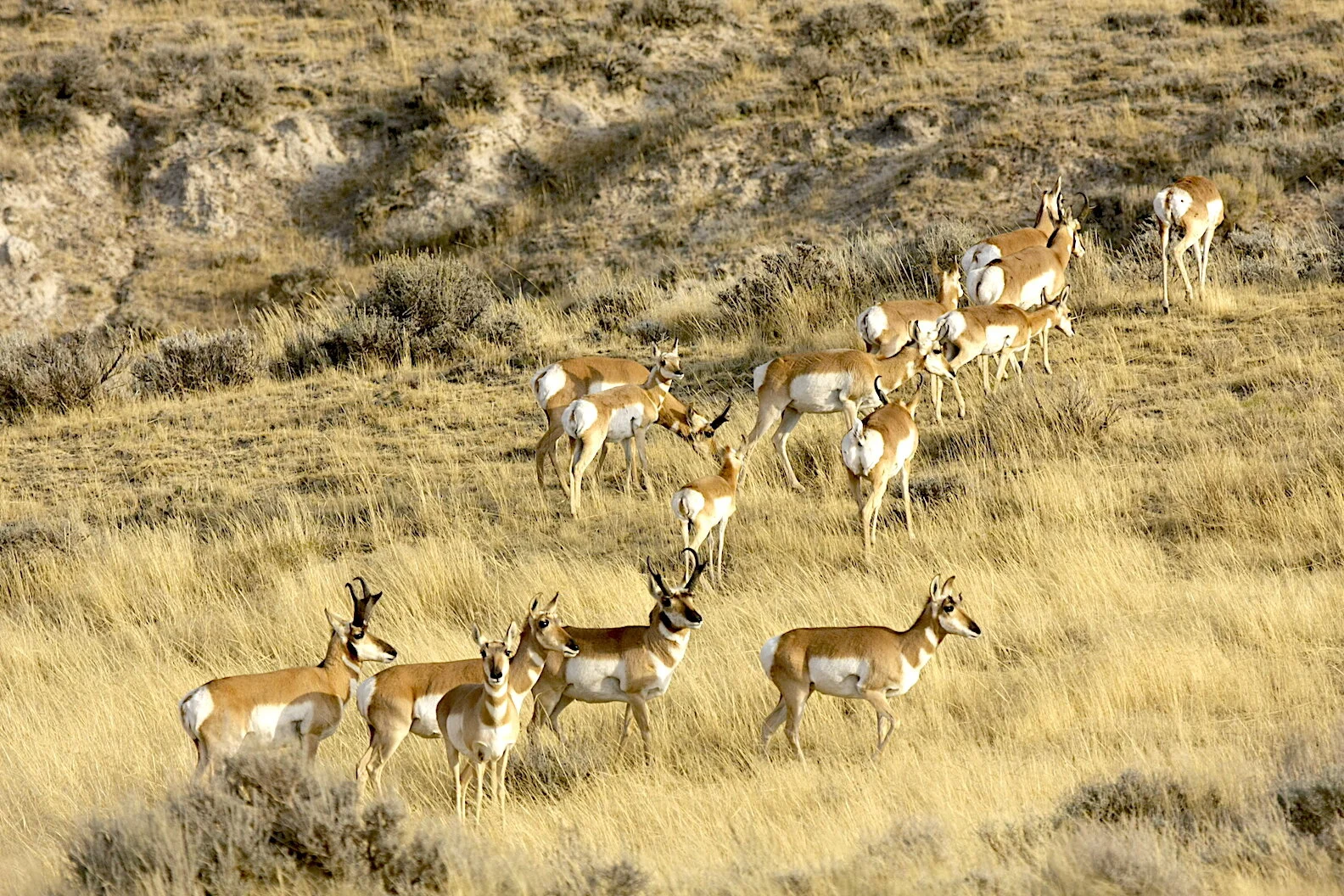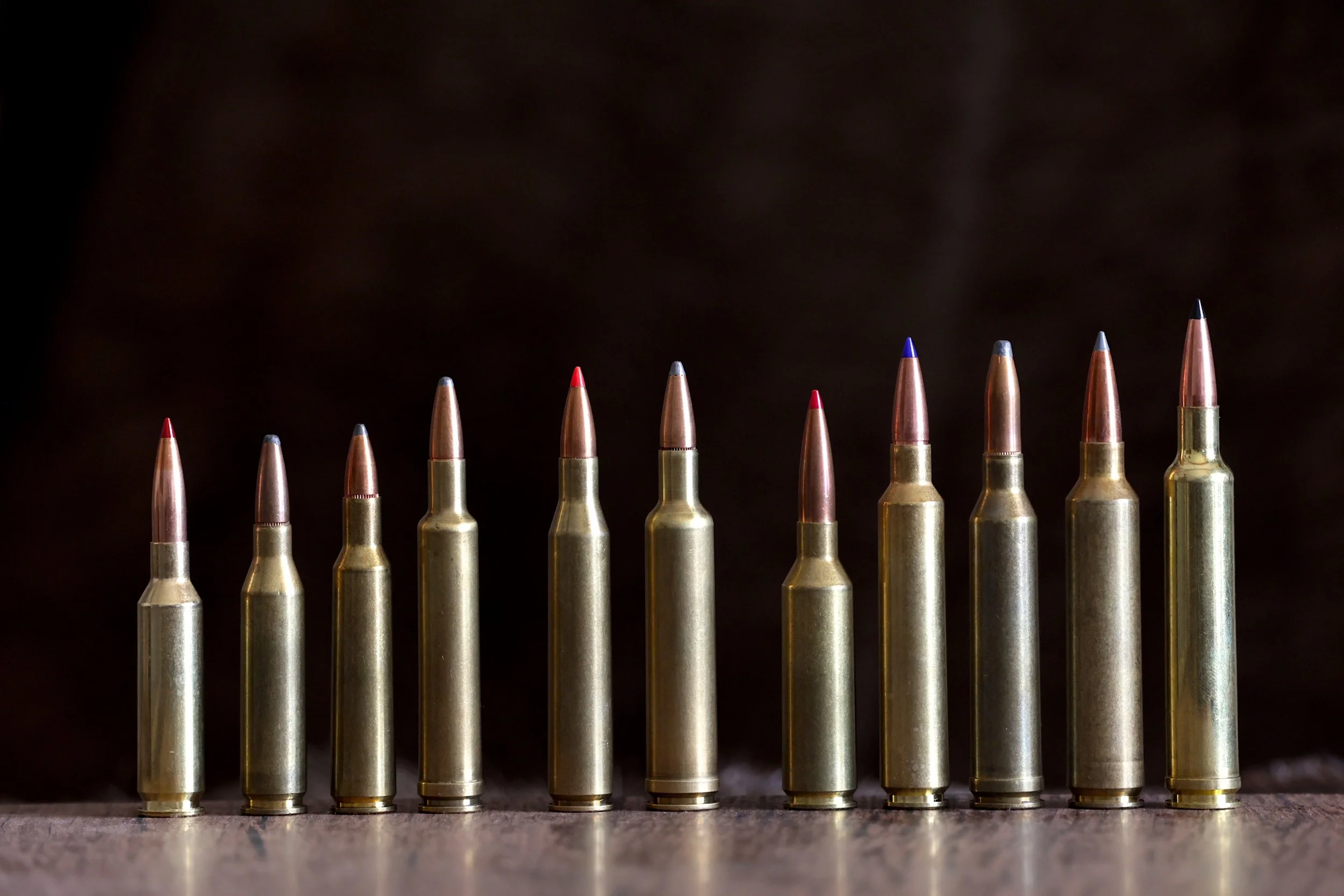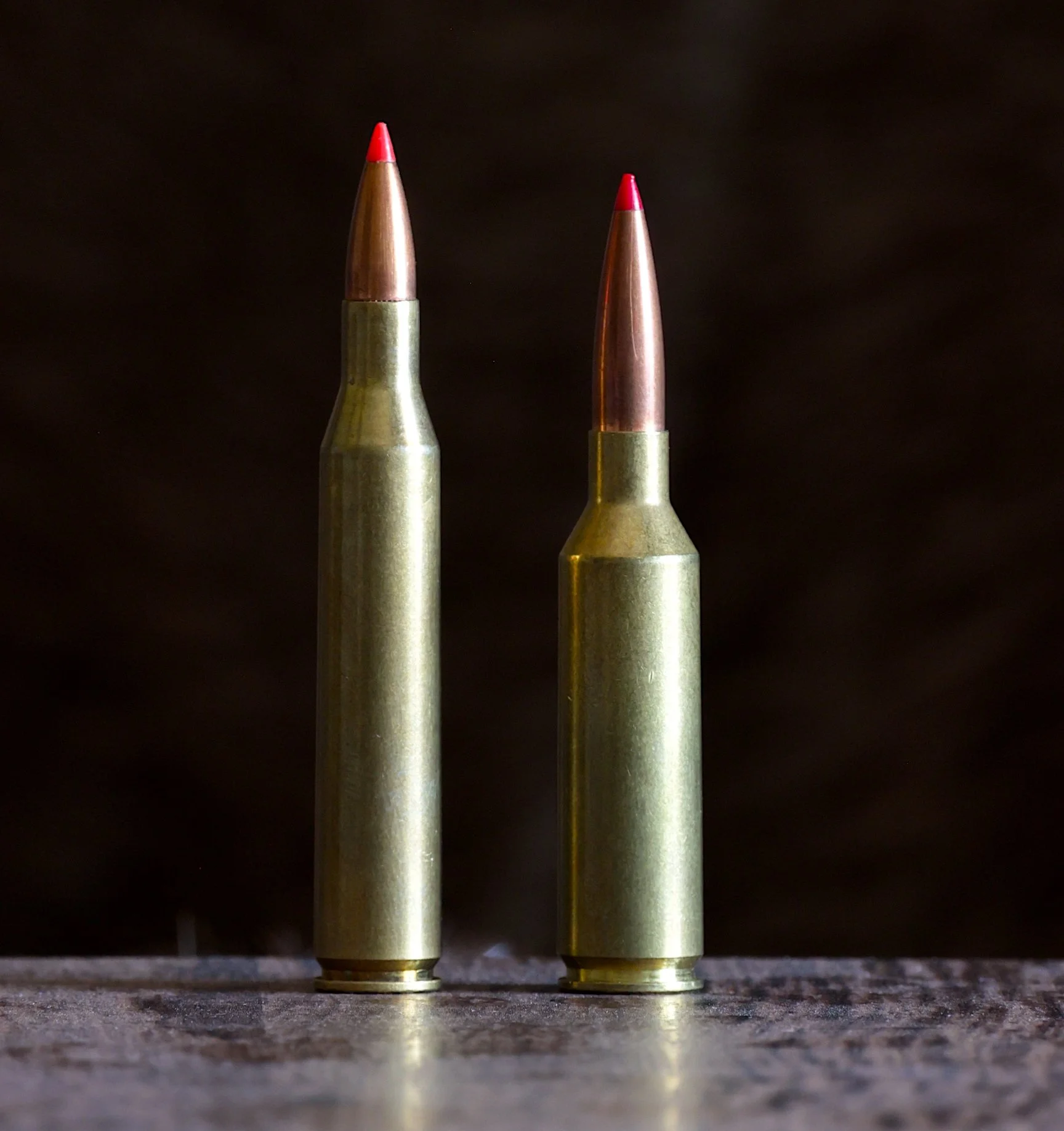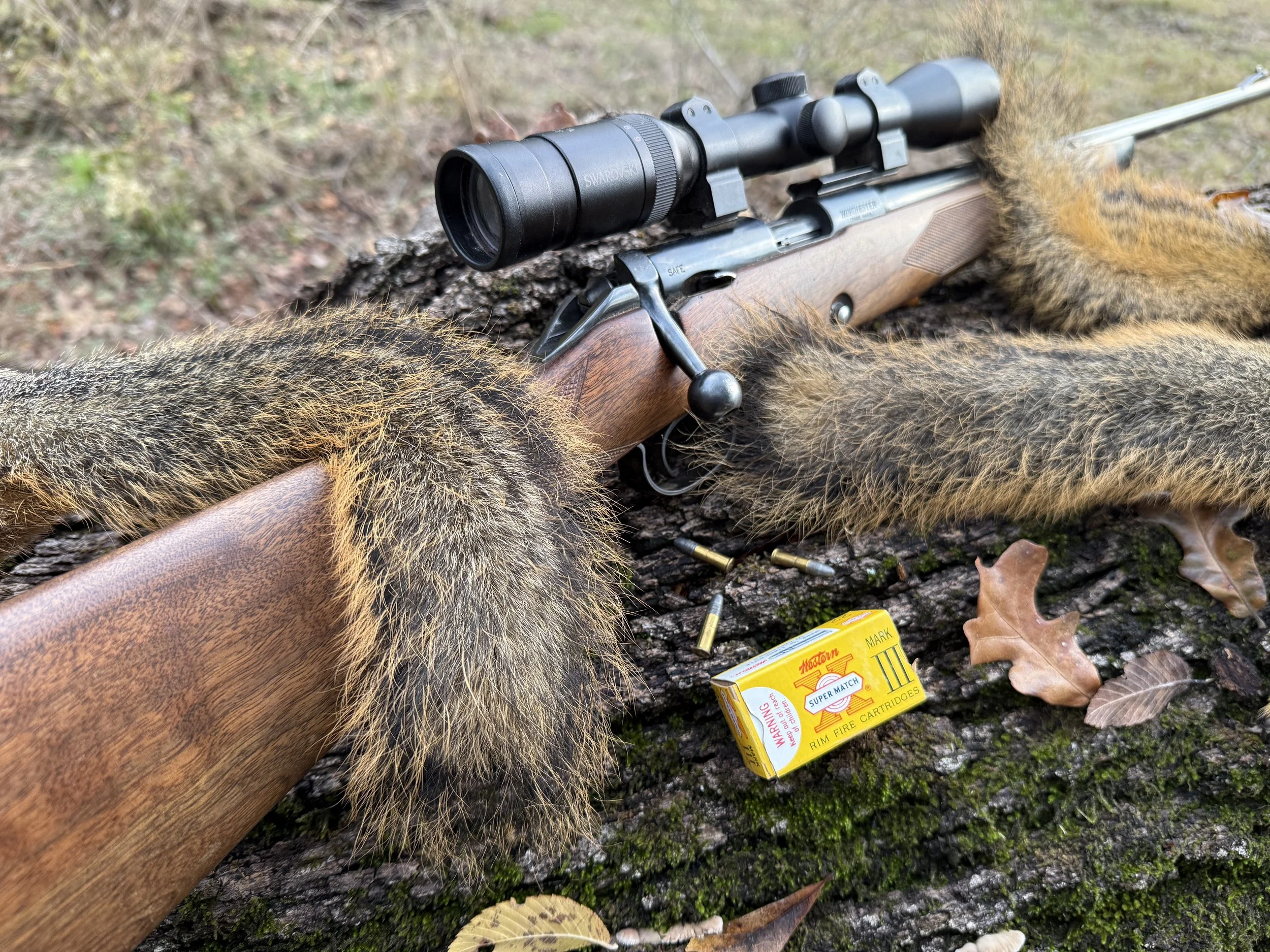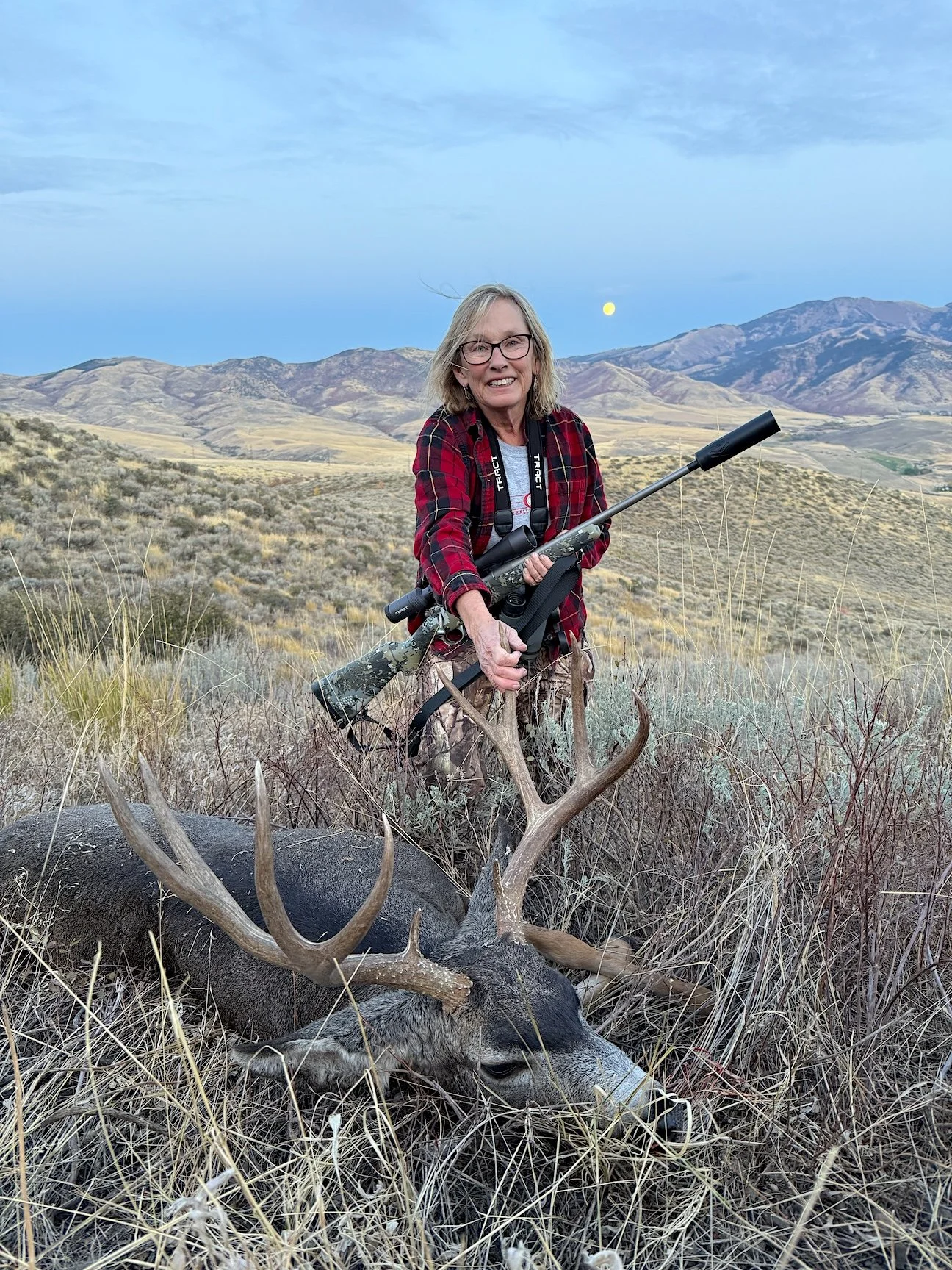Best Pronghorn Cartridges for a Weird “Antelope”
by Ron Spomer
Pronghorn “antelope” gather in sizeable herds during fall and winter.
Given the wide-open country pronghorns call home, coupled with their amazing speed (clocked at 60 mph, some claim as fast as 70 mph), it’s no surprise that hunters think these odd mammals are wild wanderers. Here today, gone the next minute, never to be seen again. Zippiddy do-dah. How fast of a bullet do you need to catch up with one?
Pronghorn Habits and Habitat
To answer that you need to understand pronghorn habitat and behavior. It’s not as cut and dried as many think. Under most conditions, pronghorns are open country homebodies reluctant to leave their territories, which may be as small as two square miles. Some ranchers might say as small as an 80-acre alfalfa field, so regularly do these animals feed and bed in such choice locations. If the living is easy and they aren’t harassed, antelope (as they’re commonly but inaccurately called) like staying close to home. And this makes them fairly easy to hunt. Throw in some broken or rolling ground or tall cover behind which to stalk and you can easily get within bow range of antelope, which partly explains how I took my first buck with a Winchester M94 lever-action 30-30 with iron sights. But pronghorn don’t always stick close to home.
The Winchester M94 in 30-30 with open sights isn’t the ideal pronghorn rig, but it’s collected more than its share of these fleet footed animals.
According to researchers, drought, poor forage, and dried up water holes force pronghorns to move great distances and expand their territories. These are the widely wandering pronghorns that truly might be here today, gone tomorrow, especially in desert habitats. So start your hunt by noting habitat conditions. Where and when food and forage are abundant, pronghorn females and their fawns won’t range far. The better the living conditions, the smaller the area they use. By minimizing travel and knowing their territories intimately, they are best able to avoid predators. And where you find does, you find bucks. You should have plenty of time to complete as perfect stalk for a fairly close shot. No need for an extreme range rifle setup.
Pronghorn Desert Extremes
At the other extreme, desert pronghorns might roam a hundred square miles to find forage and water. Bucks respond to doe bands by either attaching to one or by staking out territories of their own, usually along the fringes of several doe groups in prime habitat. In this way they maximize contact with the most potential breeding partners come “the season.” The oldest bucks generally claim and defend the largest territories while youngsters flit around and between them as best they can. Getting a good poke at these wide ranging bucks might require a cartridge that throws bullets fast and far with minimal deflection in crosswinds. You might get one crack at a migrating or roaming buck, so you’d might want a long range rifle/cartridge/bullet. I’ll suggest a couple later in this piece, but first… here’s additional information about pronghorn behavior that can help you get the drop on them.
Territorial Integrity Among Pronghorn
A pronghorn buck scent marks a thistle by rubbing his oily, black “cheek patch” on it.
A territorial buck marks it property by scraping a bare spot in the dirt and scenting it with urine and droppings. He also rubs oil from his black, odoriferous “cheek patch” glands on prominent twigs, yucca leaves, and shrubs. Finally, he stands on ridges and flat, broad fields for long periods, snorting and displaying to all that hear and see him. This snort-wheeze can be heard from as far as a mile on calm days and helps hunters locate their quarry. Experienced antelope hunters listen for these calls while glassing for the bucks that make them. Then they plan their stalks and get right to work before the buck wanders off.
If you see and hear no bucks but discover a concentration of bare, pawed ellipses of dirt with droppings in them, you’ve found a buck’s territory. He might be back in a minute or a day. But in dry, poor quality habitat, he might have moved far to find greener pastures, especially if the doe herd has moved. Bucks will abandon their territorial marking and defense tactics to attach themselves to migrating band of does. That strategy puts them right where they need to be when breeding gets underway. (They don’t want to arrive late to this party!) During pronghorn season in most states, bucks will be running with the ladies. So you really don’t need to worry if they are territorial defenders or wanderers. Just find the does. Some bucks switch from band to band within their territories while trying to keep interloping males out. Others stick with one band and merely defend them from encroaching males. Either way, you should see a lot of chasing. Be ready to indulge in some chasing, too.
At top speed a pronghorn can run 60 mph, some claim 70 mph. Regardless, no other land mammal in North America can catch them.
Chasing, Hiding, Fighting and Shedding
The competitive behavior of bucks makes it possible for bowhunters to attract harem bucks by popping-up a small buck decoy. The territorial instinct often brings the herd buck on the run, ready to fight. This isn’t recommended in firearms season for safety reasons. For their part, does incite chases by showing interest in other bucks. This is to their genetic advantage because they then select the fastest, most durable buck for mating, ensuring strong, fast fawns. A doe might wander from the band to check out an approaching, young buck. That brings the herd buck charging to drive off the competitor and herd the offending doe back to the group. And while he’s so engaged, another young buck or two might race in from the backdoor to cut out other females. All this racing and chasing increases your chances for spotting the animals. But it can also carry them quickly out of range, which again suggest a fast, flat-shooting cartridge with a lot of reach.
One oddity biologists have discovered is the “hider” buck. This is a crafty devil that drives an estrus doe from the herd and into an obscure corner where the pair can enjoy a quiet honeymoon. In this way he prevents other bucks from stealing his girl. This tactic seems most common in tough, poor forage years when reduced chasing and fighting save energy. Fighting?
Pronghorns flare the white hairs on their rumps when alarmed. It likely telegraphs a visual alert to others in the area.
Oh yes, pronghorns fight just as vigorously as other horned males. Instead of bashing heads like sheep, they lock horns and wrestle like whitetails. It’s mostly a twisting and shoving match, the loser getting escorted away at the point of the winner’s horns – fast. Spot a pair of bucks horn wrestling and you can often stalk close.
By the way, it is speculated that the prongs on antelope horns evolved to stop the forward progression of combatants’ horns, thus preserving eyes during the wrestling. The curved tips probably minimize dangerous stabbing wounds. Pronghorns are the only horned animal that has a divided or bifurcated horn, which puts it in a family all its own. They are not true antelope, but the last survivor of an ancient family, Antilocapridae. Fossils show many variations that have gone extinct, including one with four horns, another with anvil-topped horns.
The final trait that clearly pushes pronghorns into a family all their own is the annual horn shedding. This is the only horned animal on Earth that ejects its horns and grows fresh ones. Here’s what happens:
When testosterone levels drop after the rut, other hormones loosen the outer sheath of horn from the core. It slips off around early November while hairs at the base begin morphing into new horn that gradually grows up and around the black, rubbery cartilage covering the four- to six-inch long bone core. This fusion of hair into horn continues through winter. By June it is pretty much done. This is why age doesn’t increase horn size in pronghorns the way it does in all other horned mammals. Sheep horns, for example, peak with age because those horns never stop growing. Pronghorns have to start from scratch every year. This means winter conditions determine horn size. After age three, a buck is fully mature and the horns he grows are purely the result of winter conditions. The easier the winter and the more abundant food supplies, the bigger horns grow.
A late September pronghorn buck in its prime.
Best Cartridge and Bullet Choices
But with which rifle and cartridge? Traditional favorites include 243 Win., 270 Win. and 25-06 Remington, the latter considered the quintessential pronghorn cartridge. Fast and flat with minimal recoil. Of course there are others in these calibers as good or slightly faster, the 6mm Creedmoor and 257 Wby. Mag. coming to mind. Step into the 6.5s and you truly find long range potential in the 6.5 PRC, 6.5 RPM, 26 Nosler, and screaming 6.5-300 Wby. These last three may be more than needed, but then plenty of pronghorns are taken with various 7mm and 300 magnums. Overkill in my experience, but they certainly have the range. We could add reams of ballistic data comparing one flat cartridge to another, but the bottom line is that there are more than plenty from which to choose. A bigger concern should be wind deflection potential. We can compensate consistently for drop via laser rangefinder and ballistic trajectory tables, but wind deflection is inconsistent. The way to beat it is first by maximizing a combination of muzzle velocity and B.C., aerodynamic efficiency. The less your bullet drags, the less it deflects in the wind.
Great pronghorn cartridges include 6mm Creedmoor, 243 Win., 6mm Rem., 240 Wby. Mag., 25-06 Rem., 257 Wby. Mag., 6.5 PRC, 6.5 Wby. RPM, 264 Win. Mag., 26 Nosler, and 6.5-300 Wby. Mag.
High B.C. bullets are the weak link in the 25-calibers, the Berger 115-grain VLD rated B.C. .483 is the highest I know. Hornady’s 110-gr. ELD-X is close at B.C. .465. Nosler’s 115-gr. Ballistic Tip at .453 is next in line. You can find the Blackjack ACE 131-gr. rated B.C. .669 (G1) and the Berger 135-gr. Elite Hunter at .613 B.C., but neither will stabilize in traditional 25-06 Rem. and 257 Wby. Mag. barrels. A 7.5 or 8 twist is needed. In copper bullets the Hammer Hunter 110-gr. rates an estimated G1 B.C. of .448, but also requires 8-inch twist. This suggests a fast 6.5mm as the better long range option. Unless you roll with a fast twist 6mm.
Fast Twist 6mm Pronghorn Cartridges
The 6mm Creedmoor is the easiest route to this set up. It roughly matches the muzzle velocity of the 243 Win., but standard twist is 8 compared to the 243’s 10. This means the Creedmoor handles the high B.C. 105-gr, 108-gr. and 115-gr. .243 bullets. Short of the 240 Wby. Mag. with a fast twist barrel, the 6mm Creedmoor is your best 24-caliber option for beating the wind with a light recoiling rifle, but out to about 400 yards the 243 Winchester (and 6mm Remington) will hang right with it. I’ve hunted dozens of pronghorns in seven states and rarely have I needed to shoot farther than 400 yards. Plus, I’m old school. My favorite pronghorn rifle is a Dakota Model 10 single-shot chambered 25-06. Pushing the 92-grain Hammer Hunter 3,400 fps zeroed at 275 yards puts peak trajectory just 3 inches high at 150 yards, only 1.5 inches low at 300 yards. Deflection in a 10 mph right angle wind at 300 yards is 7.3 inches. I know I could shoot flatter and drift less with the 257 Weatherby, but that falling block Model 10 rifle keeps whispering my name. So the question is, how much effectiveness am I sacrificing by using my 25-06 instead of a higher B.C. 6.5mm?
The 25-06 Remington will shoot flatter, but with the right high B.C. bullet, the 6.5 PRC will deflect less in crosswinds.
Study the ballistic charts below and you’ll see how the 25-06 shoots flatter than the 6mm Creedmoor and 6.5 PRC all the way to 600 yards, but the higher B.C. of the .264 bullet gives it a significant wind advantage. Given the winds in most pronghorn country, the higher B.C. option might be the smart way to go. Or you can be like me and compensate for wind by stalking closer. Over the years I’ve taken more pronghorn inside of 300 yards than beyond.
25-06 Rem., 92-gr. Hammer Hunter, 275-yd. Zero
6mm Creedmoor, 115-gr. Berger VLD, 255-yd. Zero
6.5 PRC, 150-gr. Nosler ABLR, 255-yd. Zero
Choices and Conclusions
Of course, you are free to choose any cartridge/bullet combination you prefer. Several .257 bullets might deflect less in wind than the 92-gr. Hammer. But do remember there’s strong potential for long range shots and significant winds on any pronghorn hunt.
The keys to a successful pronghorn hunt are knowing the animal and its behavior plus knowing your rifle/cartridge/bullet and its behavior. Knowledge is power.


